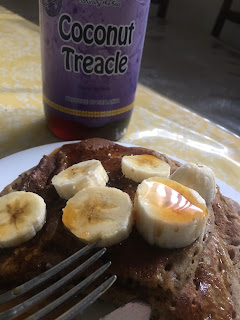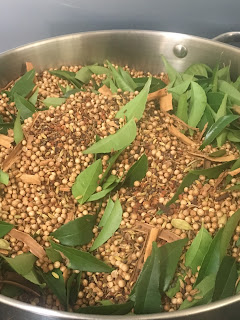Wheat free eating rewarded by chocolate banana sorbet and sweet potato cupcakes :)
As spring started, Elijah’s eczema flared up again. All
the conservative measures of managing it haven’t worked as well as the
medications and creams. Then we have decided to reduce wheat in our diet
as there is a lot of research linking the hybridised wheat we consume to many
autoimmune diseases. I am researching this and will let you know my
findings. It has been a little hard as
the kids have been turning their noses up to my wheat free creations, like the
green vegetarian sausages that I made today without strictly following the
recipe which I often do. Oops! Elijah kept asking me why it was green. ‘Well,
because it’s Shrek sausages’. It was a
bit chewy and they were spitting it right back out. I don’t blame them as
Jeremy was discretely encouraging Eraliya to eat out of his plate too. On the
other hand, the thermomix gluten free bread has been excellent and we have been
enjoying this.
This made me think that starting something new is hard and
then it becomes a habit. We do it without thinking, it becomes second nature.
Good habits are great but what about bad habits? I have read that it takes 21
days to break a bad habit but only a few times for it to become a habit.
Breaking a bad habit is hard like smoking, browsing the internet till late at
night, eating unhealthy, to name a few. We often want to stop the bad habit but
we have plenty of excuses. For example, I should exercise BUT, I should lose my
baby belly BUT. I’m just trying to help you get rid of your BUT. Get it... are
you laughing? Sorry, I heard it on the radio but the above are my excuses.
However, we can break a bad habit with a good habit. If we want to lose weight,
all we think of is dieting. We think of it so much that all it does is makes
you want to eat. What if we change our thinking habits? Instead of thinking of
going on a diet, focus on eating healthy, think of foods that are good for you
and decide to be healthy. This applies to all areas of our lives, at home,
work, with kids. In our household, our current morning routine is not good for
many reasons. Jeremy and I discussed a better routine (which involves me waking
up earlier with him, oh help!) and wrote it on a white board and it sits in the
kitchen. Let’s see if our family can change our morning habits? Is there
something you like changed in your everyday routine? How will you challenge it?
There are hundreds of lists out there that suggest areas to
improve in your life for your well-being, for a life time of vigour and health!
Here is the best one I found in my new favourite cook book ‘Rainbow recipes’ by
Aileen Sforcina. She calls it the Australian challenge and assures results in
even ten days. Can we apply this and break some bad habits in our lives?
Air
Enjoy open air; go for a walk in the bush, by the water or
in the park. Learn to breathe deeply particularly when feeling tired or down
Unselfish love (have good relationships)
Help and encourage someone each day; lighten another’s
burden. Listen and share with others life’s ups and downs; develop an attitude
of gratitude. Forgive those who have wronged you, don’t hold grudges, SMILE and
be happy
Spirituality
An experience of connectedness with God; define beliefs and
values, meaning and purpose of life and the future meditate or pray every day.
Enjoy nature’s tranquillity, find peace and contentment. Read from a good book
daily, try the bible; guard the windows of your mind
Temperance and balance
Establish balance in everything; moderately use what is good
for you and abstain from which that is harmful; alcohol, caffeine, cigarettes
and drugs
Regular exercise
Walk briskly, ride a bike or swim for at least 30-60 minutes
a day, 3-4 times a week. Exercise when feeling anxious, depressed, stressed,
tired or overworked
Ample sunshine
Walk, sit, surf or bathe in the sun 30-60 minutes each day;
cover up in summer between 11am and 3pm. Sunlight brightens you up, increases
circulation, lowers cholesterol, makes vitamin D
Lots of water
Drink more: pure water; at least 2 litres a day (8 medium
glasses), NOT at meals. Drink less: soft drinks, canned drinks, cordials,
coffee and tea
Individual hygiene and
cleanliness
Be clean and tidy, remove rubbish; look after your
environment, use natural products. Shower each day and after exercise, change
clothes regularly and wash hands
Adequate rest
Sleep at least 7-8 hours each night; go to bed before 10pm.
Take one day off each week and one month a year for rejuvenation, relaxation
and refreshment. Turn off the TV; relax, reduce stress and manage your time
wisely – be positive
Nutrition
Eat more:
Whole plant foods are rich in enzymes, phytochemicals, vitamins, minerals and
fibre. Fruits and vegetables, one or more raw meals a day, 2 cups of greens per
day. Good breakfasts of fruits, whole grains, nuts and seeds (make breakfast
the main meal). Fruit and vegetable juices; cleanse with a 3-4 day vegetable
juice fast when unwell
Eat less:
Foods with high cholesterol and high saturated fats; less meat, dairy and eggs.
Sugar, salt, white flour, butter and processed oils; reduce frying and
grilling. Reduce fast foods, cakes, desserts, sweets and snacks. Have 2-3
square meals a day. Reduce processed and refines foods with preservatives,
colouring agents and additives
The author says
that sickness occurs when one or more of the above is out of balance. This is
the ideal. I for one only have good habits in I,
individual hygiene and cleanliness J. Each of these points may appeal to different people
and work on creating good habits in those and I’m in the business of nutrition
and attempting to form good habits in it.
Original Sri Lankan diet consisted of rice and foods made with rice flour. The use of wheat grain is a more recent addition. We have become so used to wheat foods, it hard to cook without it. However, if you use your imagination, it's doable. Here are some wheat free Sri Lankan recipes and a pancake recipe.
Have a wonderful week!
TIP: Serve with plum jam* and fresh fruit.
* Sugar free plum jam from 'Rainbow Recipes': add a cup of fresh plums (stone removed) and a cup of sultanas into the thermomix bowl. Blend for 20s at speed 8. Cook for 10minutes at speed 1. Scrape down the sides of the bowl and blend for 1 minute on speed 9, increasing speed 1-9 slowly. Place in a sterilised jar and in the fridge.
(P.S. Ice cream cones in the photo were not wheat free. I'm looking for a waffle iron to make my own. So far I haven't been successful. Please let me know if you have any tips)










.JPG)